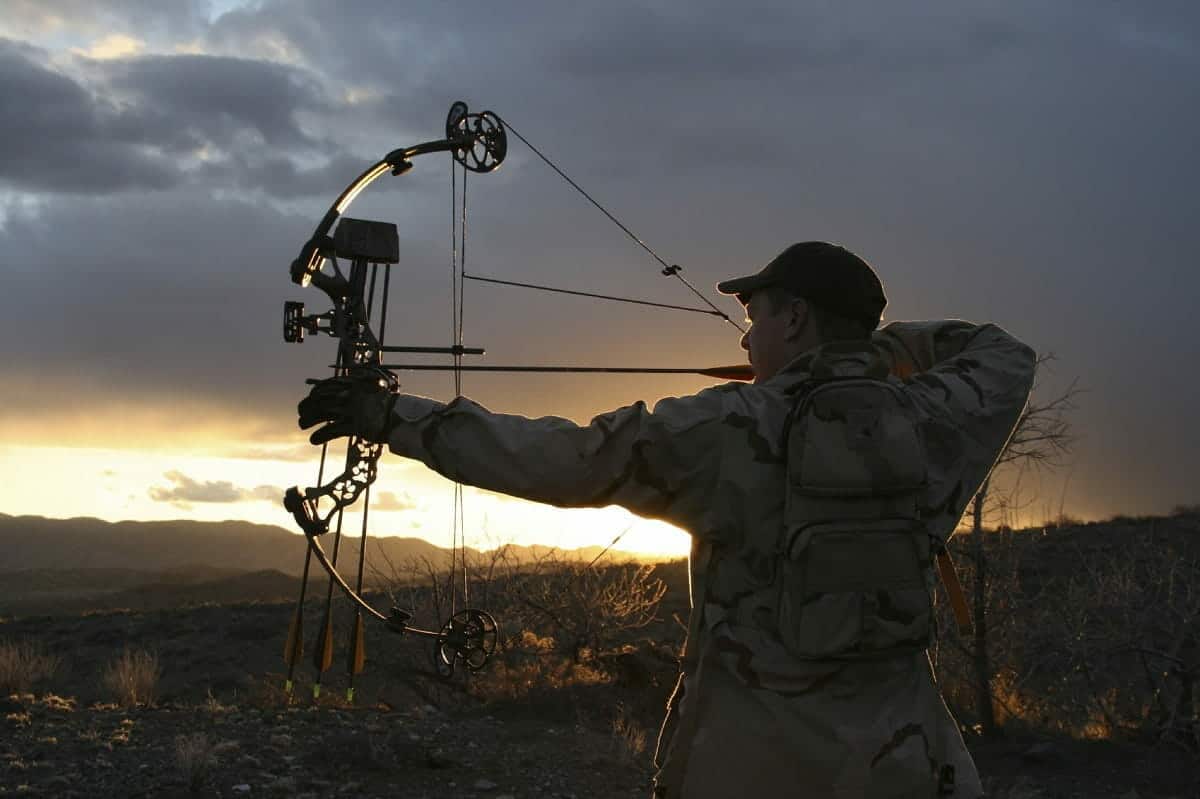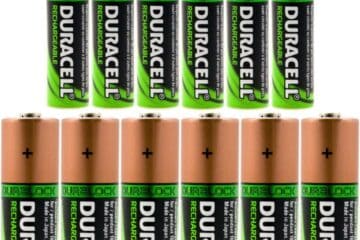A crossbow is an excellent choice for hunting small, medium, and large game, as well as for target shooting. With modern advancements, crossbows offer superior accuracy and power, making them a great alternative to traditional firearms. Whether you’re a beginner or an experienced bowhunter, using a crossbow allows for precise shooting without the need for live ammunition.
Thanks to cutting-edge technology, today’s crossbows are more efficient, powerful, and easy to use than ever before. However, with so many options available, choosing the right one can be overwhelming. That’s why we’ve compiled a list of the 10 Best Crossbows of 2025 to help you find the perfect fit. Plus, don’t miss our Comprehensive Buyer’s Guide, where we break down key factors to consider before making a purchase.
1. Barnett Whitetail Hunter

A bow built for the hunt, the Barnett Whitetail Hunter is great for anyone looking to get into the action during the next deer season. With an Anti-Dry Fire trigger system and finger safety reminders, this crossbow is designed for safe operation every time.
This crossbow boasts a draw weight of 150 pounds and an overall carry weight of just 6.4 pounds. It’s capable of firing bolts at a speed of 350 feet per second and measures 34.25 inches in length and 18.25 inches in width. This crossbow package includes a 4×32 scope, rope cocking device, lightweight quiver, two 20-inch Headhunter arrows, and lube wax for strings.
2. CenterPoint Sniper 370
The CenterPoint Sniper 370 is designed for the ultimate in big game performance but comes in a compact package that’s easy to maneuver and carry on longer mountain hunts. It offers a fully adjustable stock and pass-through foregrip to accommodate your unique shooting style.
This crossbow features a 370-feet per second firing velocity and a 185-pound draw weight. The bow’s quad limbs are manufactured with a precision CNC Machined Cam system and the bow comes with integrated string suppressors for a quiet, vibration-free shot.
3. Wicked Ridge by TenPoint Invader G3
The Invader G3 widely proclaimed the safest, lightest, narrowest, and fastest Wicked Ridge model to date. Designed for optimal hunting efficiency without excessive accessories, this crossbow is a complete package.
It features a draw weight of 165-pounds and a power stroke of 13.5 inches. This crossbow weighs 6.6 pounds without accessories and is capable of firing bolts at speeds up to 330 feet per second. The full package includes a TenPoint 3x Multi-Line Scope, ACUdraw Cocking Mechanism, Instant-Detach 3-Arrow Quiver, and 3 400-grain carbon bolts with 100-grain practice tips.
4. SAS Troy 370
The SAS Troy 370 is built for more experienced archers looking to upgrade to a sleek crossbow that offers exceptional speed, amazing accuracy, and incredible performance. The ambidextrous auto safety also makes this a great crossbow for both left and right-handed shooters.
This crossbow features a draw weight of 185 pounds and a total weight of 8 pounds with all accessories attached. Capable of firing bolts at speeds up to 370 feet per second, this bow package also comes with a Picatinny rail, 4×32 scope, adjustable stock, and quick detach quiver.
5. Barnett Ghost 420
From Barnett’s elite Carbonlite crossbow series, the Ghost 420 is Barnett’s fastest crossbow to date, capable of firing bolts at speeds up to 420 feet per second. It’s an excellent bow for high-quality performance and is sure to make your hunting buddies a bit jealous.
This crossbow features a full carbon step-through riser and a machined aluminum flight track designed to minimize weight while stalking or patiently waiting for the shot on a stand. With a 185-pound draw weight, the Barnett Ghost 420 also offers single bolt assembly, an Anti-Dry Fire Trigger System, and TriggerTech Frictionless Release Technology™.
6. PSE Fang
With a new and improved trigger, the PSE Fang Series Compound Crossbow is a complete kit for everything from small game hunting to going after moose or bear. Also a great target shooting crossbow, the Fang series features a draw weight of 155 pounds.
It also boasts a power stroke of 14.25 inches and total overall weight of just 6 pounds, 7 ounces. Capable of firing bolts at speeds up to 345 feet per second, the full package includes a 4×32 scope, a 5-bolt detachable quiver, a cocking rope, three 20-inch carbon bolts, and three field points.
7. Carbon Express Blade X-Force
A great crossbow for anyone looking for a bow that offers high performance at a reasonable price, the Carbon Express Blade X-Force discharges bolts at speeds up to 320 feet per second and is 5% lighter than competing crossbows.
This bow features an aluminum rail to ensure repeatable accuracy and an adjustable butt-stock and foregrip for a custom fit. The bow’s slip-resistant single piece stirrup is designed for fast loading and an ambidextrous safety makes this bow a viable option for both right and left-handed shooters.
8. TenPoint Turbo GT
Another amazing crossbow from TenPoint, the Turbo GT was the winner of the Game & Fish Reader’s Choice Award in 2016. It’s a great option for anyone looking for a complete crossbow package that includes everything you’ll need to get out on the hunt.
This crossbow features an ultra-compact assembly with a power stroke of just 12.6 inches and the capability of firing bolts at speeds up to 360 feet per second. The complete package includes a 3X Pro-View 2 Scope, a 3-Arrow Instant Detach Quiver, three 20-inch Pro Elite Carbon Arrows, and an ambidextrous side-mount quiver bracket.
9. SA Sport Fever
Designed with experienced bow hunters in mind, the SA Sports Fever is available at a much lower cost than many of its competitors. The bow’s ambidextrous auto safety makes it a feasible option for both left and right-handed shooters.
The bow offers an adjustable weaver style foot stirrup and a lightweight composite track. This 175-pound recurve crossbow package comes with 4 16-inch aluminum arrows, a 4×32 Multi-range scope, a padded shoulder sling, a rope cocking device, and hex keys for easy adjustments.
10. CenterPoint Tormentor Whisper
The Tormentor Whisper offers superior performance for the stealth-hunting aficionado. The bow’s narrow, 14-inch cocked axle-to-axle width, compression fiberglass quad limbs, and whisper silencing system make it the ultimate bow for hunters that want to get close to their prey without being detected.
This bow features a compound system with a power stroke of 13.75 inches and a draw weight of 185 pounds. Capable of firing bolts at speeds up to 380 feet per second, this crossbow package also includes three 20-inch bolts, a 4×32 scope, quiver, and rope cocker.
—
Buyer’s Guide
While it’s tough to pinpoint exactly when and where the crossbow was invented, many historians believe crossbows originated East Asia and Europe around the 6th Century B.C. (1) There are actually early Biblical references to the crossbow, although under a different name, the “ballista.”
Some traditional bow users believe crossbows make hunting “too easy.” But crossbow hunters must possess the same woodsmanship abilities and shooting skills as vertical bow hunters (2). This Buyer’s Guide will focus on several major characteristics that’ll make your choice simpler.
Compound Crossbow vs. Recurve Crossbow
Recurve crossbows have simpler designs than their compound counterparts. The simplicity of a recurve makes it easier to maintain. Strings of a recurve can easily be replaced without the help of a bow shop or bow press.
Recurve crossbows are also generally lighter than compounds, which make them easier to carry over long distances or when climbing up into a tree stand. However, a recurve bow often propels crossbow arrows at a slower speed than a compound and they are typically wider, which makes them more difficult to maneuver in a tree stand or blind.
Additionally, the trigger mechanism of a recurve bow holds the entire peak weight when the bow is cocked. This added stress reduces the mechanism’s serving life. Finally, a compound crossbow will typically shoot arrows at a faster rate than recurve compound bows.
Sizing
When it comes to sizing crossbows, your intended use will play a large role. If target shooting will be your primary activity, for example, size isn’t so important. But when it comes to hunting, smaller tends to be better. A smaller crossbow offers more mobility, especially laterally.
Crossbows are typically measured from one limp tip to the other. It’s important to keep in mind that, when a crossbow is cocked the distance between limb tips is at its minimum. Once fired, the limbs of the bow will return to their at-rest position, which means the span between limbs will be larger.
You should also consider the size of the power stroke. In general, a longer power stroke will be much more challenging for someone of a shorter stature. In addition, larger crossbows are typically heavier and more difficult to shoulder for extended periods of time. So make sure you take size and weight into account when choosing a crossbow.
Bolts and Accessories
A crossbow alone won’t bring home small game on your next hunt. Every good crossbow needs a good set of bolts, which are typically sold separately. Your choice of bolts can make or break the effectiveness of your crossbow.
To determine the proper arrow weight for you, you’ll first need to know your draw weight and power stroke. Too light of a bolt will result in “porpoise-ing,” which is when the arrow bends during deployment and flight. This compromises accuracy and, in the worst cases, can cause serious injury to the shooter.
Fortunately, the manufacturer’s recommendation is typically accurate when it comes to finding the right size bolts. Additionally, most crossbows come with a scope, quiver, and cocking aid. But if they don’t, these accessories are essential to the effective use of your crossbow.
Warranty
Many manufacturers boast a “Limited Lifetime Warranty” on their crossbows. The key word there is “limited.” Some of these warranties have so many exceptions that your bow actually has very little coverage in the case of breaks or damage.
In general, more expensive bows come with better warranties. A warranty for any mechanical malfunction that develops from anything other than misuse or damage should be included. In addition, the barrel, riser, trigger mechanism, cams, limbs, and limbs pockets should all be covered during the warranty period.
Within the crossbow industry, warranties vary greatly. A good warranty should set a realistic and sustainable time frame, and should always be non-transferable. Take the time to research the fine print of the crossbows you’re considering buying.
Frequently Asked Questions
If you’re a novice archer, there can be a lot to learn. Crossbows are more complex machines than traditional longbows or recurve bows. They also are a good alternative to a compound bow. That’s why we’ve compiled a list of some of the most frequently asked questions about crossbows.
Do you need a license to own a crossbow?
No. But crossbows are considered offensive weapons under the Crimes Act.
Do you need a license to hunt with a crossbow?
Yes. Exact requirements may vary by state, but typically crossbow hunters need a hunting license and a “muzzleloading hunting privilege” if they wish to hunt big game during the proper season. In some states, you must also carry a certificate of qualification.
What states have banned the use of crossbows for hunting?
As far as we can tell, Oregon is the only state that has completely banned the crossbow for hunting. Fortunately, Cabela’s provides a nice, full breakdown of regulations by state (3).
What is the difference between arrows for crossbows and those for compound bows?
The major difference is the length of the arrow. Crossbow arrows are generally shorter and thicker. The average length of a compound bow arrow is between 26 and 28 inches while the average length of a crossbow arrow is between 16 and 24 inches.
What is a ‘bolt’?
‘Bolt’ is simply the technical name for a crossbow arrow.
How far can you shoot a crossbow bolt?
Many of the best crossbows on the market today are capable of firing an arrow more than 100 yards. However, it’s important to remember that this doesn’t mean you’ll be able to hit game at this range accurately. For all practical purposes, crossbow hunters should be targeting game at a similar range as compound bow hunters.
How long should the string of my crossbow last?
Given proper care and maintenance, the string should last at least 100 shots. That said, firing several hundred shots on one string is not uncommon. String life can also vary depending on the weather conditions the system is exposed to.
What does proper maintenance of a crossbow string include?
Proper maintenance includes applying lubricant to the area where the string touches the flight track and keeping the flight track surface area free of nicks, gouges, burrs, dirt, and debris.
How can I reduce the noise of a crossbow?
Crossbows are generally louder than compound bows because they create more vibration, which translates into noise. String suppressor systems and limb vibration dampeners can reduce the noise of your crossbow.
Summary
While today’s modern beekeepers may not be utilizing crossbows to defend their hives against bears like they did in the 17th Century (4), the crossbow is still a very effective sport weapon for hunting or archery practice. We hope this article has helped you narrow down on a crossbow that’s right for you!











